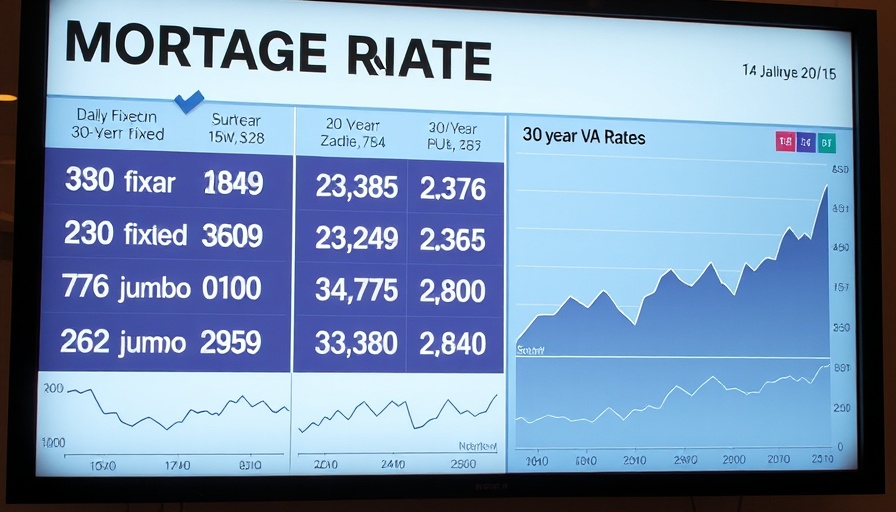
The Impact of Inflation Data on Mortgage Rates
This week witnessed a notable development in the mortgage market as the Producer Price Index (PPI) report provided some unexpected relief to borrowers. Traditionally viewed as a subsidiary indicator of inflation, the PPI can play a significant role in shaping the bond market dynamics. On Wednesday, the PPI came in considerably below expectations, leading to immediate improvements in bond prices. This positivity helped stabilize mortgage rates, preventing them from ticking higher.
Understanding the Core Drivers of Mortgage Rates
Mortgage rates are largely determined by the performance of treasury bonds; when bond prices rise, mortgage rates typically fall or stabilize. Prior to the release of the PPI, bond markets had shown signs of weakness, signaling potential increases in mortgage rates. However, the better-than-expected PPI results shifted the momentum, allowing rates to hold steady. As of September 10, 2025, 30-year fixed mortgage rates remain at 6.29%, unchanged from the previous day, demonstrating a delicate balance influenced by economic indicators.
Future Predictions on Interest Rates
The forthcoming Consumer Price Index (CPI) report, set to be released soon, will be another crucial data point to watch. Analysts anticipate that if the CPI mimics the favorable trend of the PPI, it could spell further good news for mortgage rates. Conversely, any unexpected spikes in inflation data could reinvigorate fears of increased interest rates in the long run. The pressure to manage inflation effectively remains a priority for the Fed, and decisions made in response to such data will likely reverberate throughout the entire financial system.
Operations of Mortgage Lenders During Market Fluctuations
The operational strategies of mortgage lenders are paramount in times of fluctuating markets. In the current scenario, lenders are faced with the need to adapt their rate offerings in response to real-time market data. Since lenders typically set their rates later in the day, they must be agile, recalibrating their approaches based on economic reports like the PPI. Such adaptability can play a pivotal role in maintaining competitiveness and ensuring that borrowers are presented with favorable financing options.
Loan Options and Market Choices for Consumers
For consumers navigating the mortgage landscape during these uncertain times, an understanding of available options is essential. Besides fixed-rate mortgages, borrowers may also consider adjustable-rate mortgages (ARMs), which can offer more favorable initial rates dependent on prevailing market conditions. Awareness of these options can empower consumers to make informed financial decisions, potentially leading to better outcomes in their home financing journeys.
Evaluating Risks and Opportunities
As the financial landscape evolves, evaluating the risks associated with borrowing in a stable rate environment becomes critical. Borrowers should assess their financial situations, considering fixed versus adjustable rates, and market forecasts before committing. Economic indicators like the PPI and CPI can be powerful predictors of future mortgage conditions, but focusing on personal financial stability remains paramount.
In conclusion, the current stabilization of mortgage rates, courtesy of favorable economic data, presents a unique opportunity for prospective buyers and those looking to refinance. Understanding how inflation data interplays with mortgage financing can better prepare consumers to take action. Stay tuned to market trends for insights that could influence your financial decisions!
 Add Row
Add Row  Add
Add 




Write A Comment